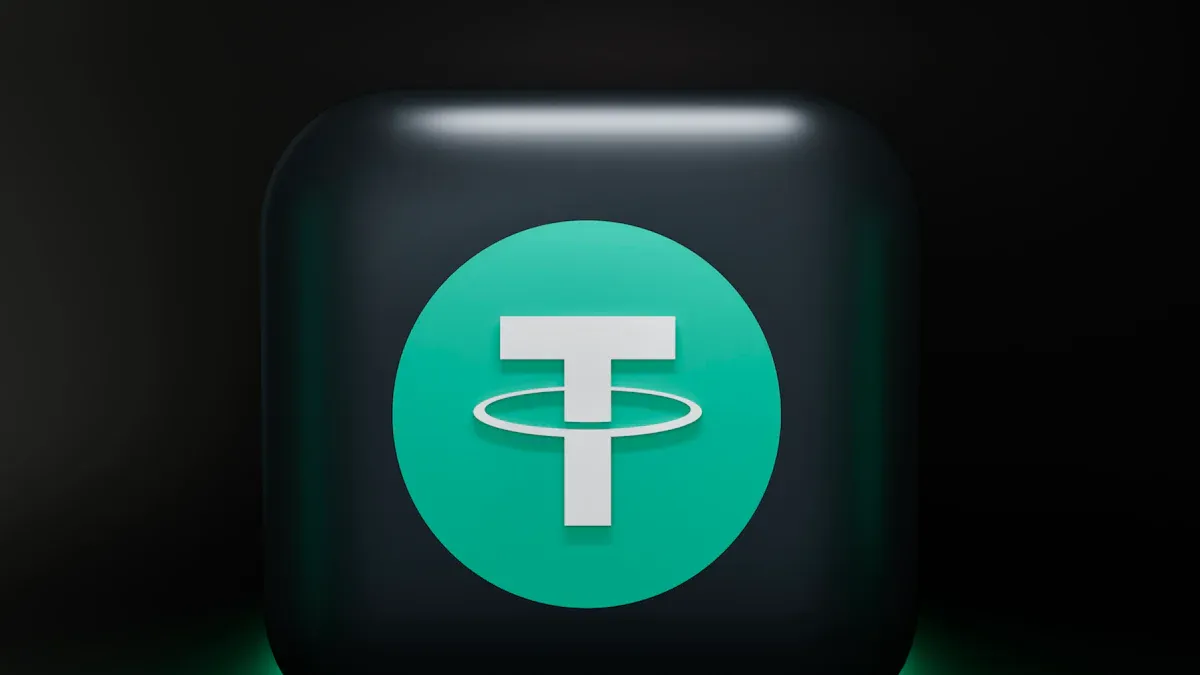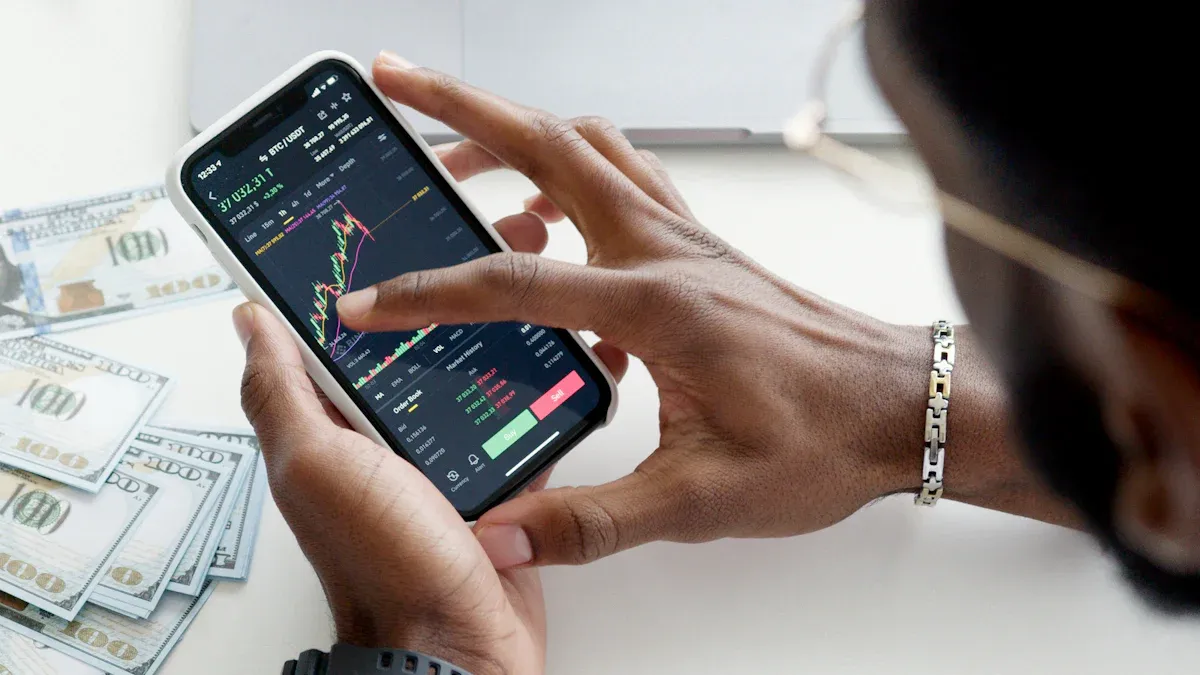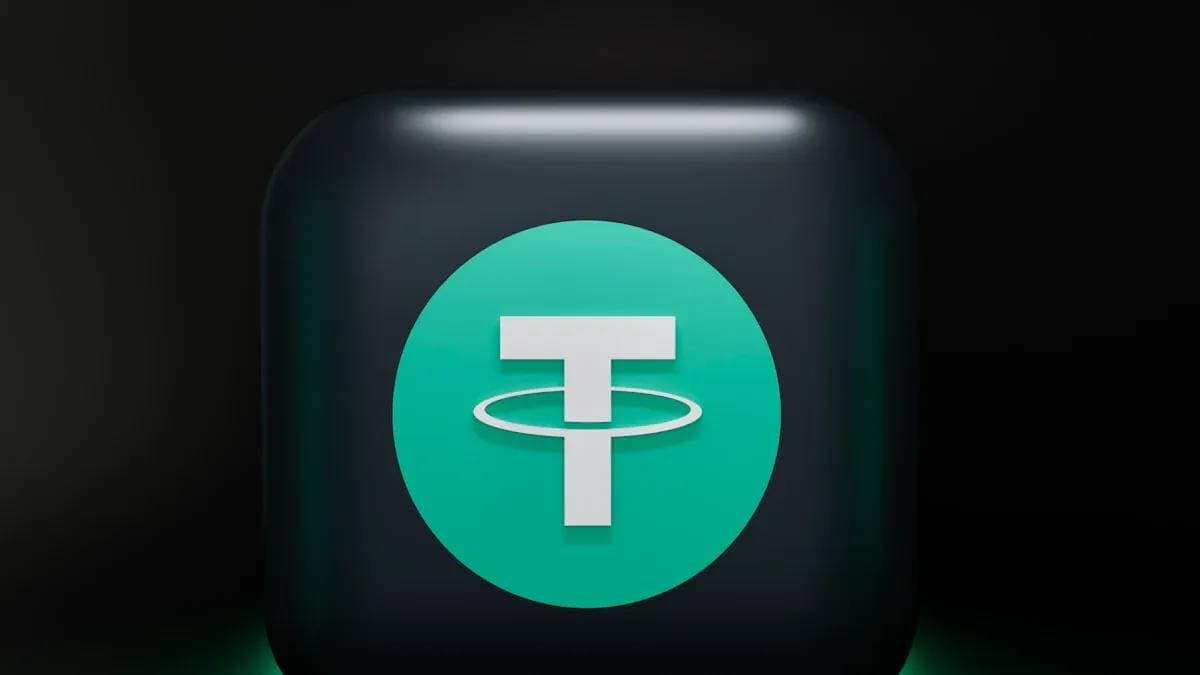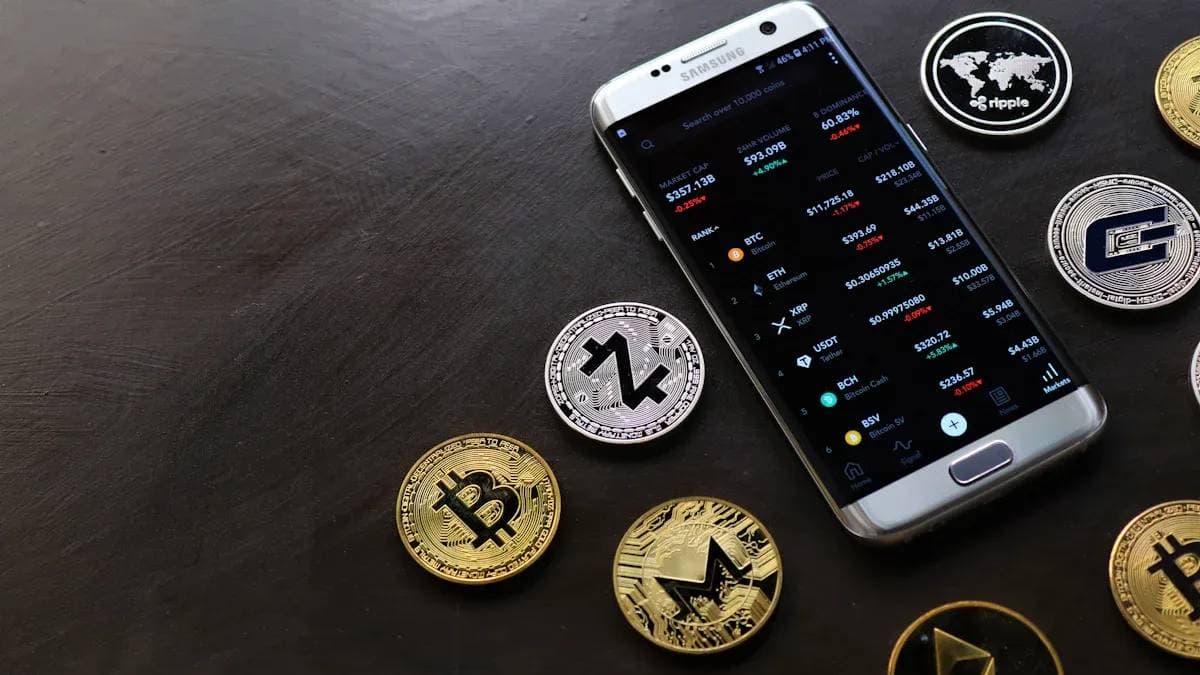- EasyCard
- Trade
- Help
- Announcement
- Academy
- SWIFT Code
- Iban Number
- Referral
- Customer Service
- Blog
- Creator
[USDT Remittance Guide] How to Achieve Near-Zero Cost Remittance to Singapore Using Stablecoins
![[USDT Remittance Guide] How to Achieve Near-Zero Cost Remittance to Singapore Using Stablecoins](https://public.hxdsmy.com/static/MTc2MjI0MjY0NTI0OTA2ODI2Mg==_1762242767979.png)
Image Source: pexels
Remitting to Singapore using stablecoins (USDT) remittance, the core method is highly efficient. You can directly sell USDT to local buyers in Singapore on the cryptocurrency exchange’s P2P market. They will transfer Singapore Dollars (SGD) directly to your bank account via PayNow or bank transfer.
Traditional bank wire transfers are not only cumbersome in process but often come with S$10 to S$20 fixed fees and additional exchange rate losses.
This method cleverly bypasses the bank’s intermediate links and has a cost advantage even compared to modern remittance tools like Wise, helping you achieve near-zero cost fund transfers.
Key Points
- Remitting to Singapore using USDT stablecoins has very low cost and very fast speed.
- Through P2P trading, you can directly sell USDT to Singapore buyers, who will transfer Singapore Dollars to your bank account.
- The entire trading process is protected by the platform, and your USDT is safe until you receive the money.
- You can only release USDT after confirming receipt of Singapore Dollars, which is a very important step.
- For safety, please choose reputable buyers and use a dedicated bank account to receive remittances.
USDT Remittance Principle and Cost Analysis

Image Source: unsplash
Understanding the principle of USDT remittance is very simple. It does not rely on banks but utilizes the “Peer-to-Peer” (P2P) market of cryptocurrency exchanges.
How USDT Remittance Works: P2P Trading Analysis
P2P trading is like an online marketplace. You post an ad as a seller, stating how much USDT you want to sell in exchange for Singapore Dollars. Buyers in Singapore see your ad and pay you directly via PayNow or bank transfer.
The entire process is secured by the trading platform. On mainstream exchanges like Binance, OKX, or some remittance-focused apps like Biyapay, the trading process is usually as follows:
- Find Buyers: You screen buyers in the P2P market who have good reputation and support your desired payment methods (such as PayNow).
- Place Order and Lock: After initiating a sell order, the platform will temporarily “escrow” the USDT you plan to sell.
- Confirm Receipt: The buyer pays to your Singapore bank account and marks it as “paid.” You must log into your own banking app to confirm the full amount has arrived.
- Release Assets: After confirming receipt without errors, you click “Confirm Receipt and Release” on the trading platform, and the platform will transfer the escrowed USDT to the buyer.
Core Security Mechanism: Fund Escrow The platform acts as a trusted intermediary. Your USDT is securely locked until you confirm receipt of Singapore Dollars. This effectively prevents the risk of buyers not paying and protects your fund security.
Cost Comparison: USDT vs. Bank Wire vs. Wise
To give you a more intuitive feel for the differences, we use a table to compare three mainstream remittance methods.
| Remittance Method | Fees | Exchange Rate Loss | Arrival Speed | Operation Complexity |
|---|---|---|---|---|
| USDT P2P | Platform usually 0, only slight spread | Extremely low, close to real-time market rate | Extremely fast, usually 5-15 minutes | Needs learning first time, proficient afterward |
| Bank Wire | High (about $15-$30 USD) | Very high (up to 5% or more) | Slow (1-5 business days) | Cumbersome process, requires filling multiple information |
| Wise | Transparent and low | Low, uses mid-market rate | Fast (usually within a day, some instant) | Simple, good user experience |
From the table, it is clear that remitting to Singapore using stablecoins (USDT) has huge advantages in cost and efficiency. Traditional banks not only charge high fixed fees, but their poor exchange rates will also cause you to lose a large sum. Although Wise has optimized a lot, when pursuing ultimate low cost, the USDT P2P solution is still the better choice.
Remitting to Singapore Using Stablecoins (USDT): Three-Step Operation Guide

Image Source: pexels
After mastering the basic principles, the actual operation is very straightforward. The entire process can be broken down into three core steps. Below, we will use the mainstream exchange OKX (official website: https://www.okx.com) as an example to detail each step for you.
Step One: Acquire USDT
Before conducting P2P remittance, you first need to hold USDT. The most common way to acquire USDT is to purchase it with fiat currency in the exchange’s C2C (Customer-to-Customer) market.
Taking the OKX platform as an example, you can operate according to the following process:
- Add Payment Method: Log into your OKX account, go to the personal center, and add the account you plan to use for payment in “Payment Settings,” such as a bank card or Alipay.
- Enter C2C Trading Area: Find the “Buy Crypto” function on the homepage, then select “C2C Buy Crypto.” This mode allows you to freely screen merchants, more flexible than “Quick Buy Crypto.”
- Screen Trading Options: Ensure the top of the trading page is set to “Buy” and “USDT.” You can enter the amount you plan to purchase (for example, 1000 CNY), and the system will automatically screen eligible merchants for you.
- Select Merchant and Place Order: The merchant list will be sorted by price from low to high. Choose a reputable merchant and click “Buy.” Then enter the specific amount you want to purchase and confirm the order.
- Get Payment Information and Transfer: After placing the order, you will see the order details page. Click “Get Payment Details” to view the seller’s receiving account information. Then, you need to log into your payment app (such as Alipay) and transfer the agreed amount to the seller.
- Confirm Payment and Wait for Release: After completing the transfer, return to the OKX order page and click “I have paid.” The platform will notify the seller to check the payment. After the seller confirms, the platform will release USDT to your funding account.
Tip: When purchasing USDT in the C2C market, be sure to use a payment account certified with your real name, otherwise the seller has the right to refuse the transaction.
Step Two: Transfer to P2P Trading Platform
After successfully purchasing USDT, these assets are usually stored in your “funding account” or “wallet account.” To sell it in the P2P market, you need to perform an internal transfer.
This process is very simple and is free and instant within the platform:
- On your assets or wallet page, find the “Transfer” function.
- Choose to transfer from “funding account” to “trading account” or “P2P account” (names may vary slightly on different platforms).
- Select the currency as USDT, enter the amount you want to transfer, and click confirm.
Now, your USDT is ready and can be used for P2P trading at any time.
Step Three: Sell USDT for Singapore Dollars
This is the core part of achieving remittance to Singapore using stablecoins (USDT). Here, you will sell USDT to Singapore buyers and exchange for Singapore Dollars (SGD) directly into your bank account.
1. Screen Reliable Singapore Buyers
Enter the P2P trading area and switch the mode to “Sell.” Then, you need to carefully screen buyers to ensure safe and efficient trading.
Screening Criteria Checklist:
- Payment Method: Select “PayNow” or “Bank Transfer” in the filter to ensure the buyer supports your desired receiving method.
- Completion Rate: Look for buyers with a completion rate higher than 95%. A high completion rate means they rarely cancel orders and are reliable trading partners.
- User Feedback & Trades: Check the buyer’s historical trading data. Buyers with many transactions and rave reviews are usually more trustworthy.
- KYC Verification (Verified User): Prioritize buyers with “Verified” or KYC badges. This indicates the platform has verified their identity information, offering higher security.
- Online Status and Activity: Choose buyers who are currently online and have recent trading activity to greatly shorten trading time.
2. Place Order and Wait for Payment
After selecting a preferred buyer, click “Sell USDT.” Enter the amount you wish to sell, and the platform will automatically calculate the Singapore Dollar amount you will receive. After confirming no errors, submit the order. At this point, the USDT used for the transaction will be temporarily locked (escrowed) by the platform.
Next, all you need to do is wait for the buyer to pay you via PayNow or bank transfer.
3. Confirm Receipt and Release USDT
This is the most critical and cautious step in the entire process.
⚠️ Core Security Warning: Confirm Receipt First, Then Release Assets!
- When the buyer clicks “I have paid” on the platform, absolutely do not believe it just based on the other party’s screenshot or notification.
- Must personally log in to your Singapore banking app or online banking.
- Carefully verify whether the received amount exactly matches the order and confirm the funds are “available” (Available Balance), not “pending.”
- Only after you are 100% sure the money has arrived can you return to the trading platform and click the “Confirm Receipt and Release USDT” button.
Once you click release, the platform will transfer the escrowed USDT to the buyer, and the transaction is officially complete. Through this process, you have successfully completed the entire process of remitting to Singapore using stablecoins (USDT), with funds transforming from USDT to Singapore Dollars in your bank account in just a few minutes.
If you are new to P2P trading, it is strongly recommended to first complete the entire process with a small amount (for example, $50 USD) to familiarize yourself with all steps before conducting large transactions.
USDT Remittance Risk Management and Profit Optimization
Although the process of remitting to Singapore using stablecoins (USDT) is efficient, you still need to pay attention to risk management and detail optimization to ensure fund security and maximize profits.
Trading Timing: How to Choose the Optimal Exchange Rate
Unlike highly volatile cryptocurrencies, USDT is pegged to the US dollar, and its exchange rate against the Singapore Dollar is very stable. Historical data shows that the USDT to SGD exchange rate has long maintained around 1.30, with extremely small daily fluctuations.
Operation Suggestion: You do not need to time the market precisely like trading stocks. Before trading, simply compare a few quotes in the P2P market and choose the best one. Exchange rate differences are usually very small.
Security Precautions: Avoiding P2P Trading Scams and Dirty Money
The biggest risk in P2P trading is receiving funds from unknown sources (commonly known as “dirty money”). To protect yourself, please be sure to follow the following security guidelines:
- Communicate Only Within the Platform: Avoid using any third-party chat tools for trading communication.
- Prefer Certified Merchants: Only trade with merchants who have good reputation, high trading volume, and completed KYC identity verification.
- Be Alert to Abnormal Behavior: If the other party urges you to bypass platform rules or release quickly, this may be a danger signal.
- Keep Trading Records: Retain all trading screenshots and communication records for emergencies.
Singapore Compliance and Tax Issues
The Monetary Authority of Singapore (MAS) has brought cryptocurrency payment services under regulation. This means P2P trading platforms need to comply with anti-money laundering (AML) and counter-terrorism financing (CFT) regulations.
Regarding taxes, you need to understand the following two points:
- Capital Gains Tax-Free: If you hold USDT as a long-term investment, profits from selling are usually not subject to capital gains tax in Singapore.
- Trading Income Taxable: If you frequently conduct P2P buying and selling, the Inland Revenue Authority of Singapore (IRAS) may treat it as business trading activity. In this case, your profits need to be taxed as income.
Bank Risk Control: Receiving Account Usage Suggestions
Singapore banks will trigger risk control alerts for certain transactions. For example, single transactions exceeding S$10,000 or transferring more than 50% of the account balance in a short time may attract bank attention.
Best Practice: It is strongly recommended to use a dedicated bank account to receive P2P payments. Do not use your main salary card or daily spending account. This not only effectively isolates risks but also makes fund flows clearer, avoiding impact on your primary account.
USDT P2P remittance has obvious advantages in cost and efficiency. Data shows its cost is far lower than traditional methods, and arrival speed is faster, making it an efficient low-cost choice.
Operation Checklist: Acquire USDT → Transfer to P2P Platform → Screen Buyers → Confirm Receipt → Release USDT
Any financial operation carries risks. It is recommended to test with a small amount after fully understanding the process to ensure trading security.
FAQ
Is it legal to remit with USDT in Singapore?
The Monetary Authority of Singapore (MAS) regulates cryptocurrency payment services. Conducting P2P trading through compliant exchanges is a regulated activity. As long as the fund sources are legal and the operation complies with platform rules, there is no need to worry about compliance issues.
What if the buyer does not pay?
The platform uses a fund escrow mechanism to protect you.
- Your USDT is locked by the platform during the transaction.
- You must personally log into the banking app to confirm full receipt.
- You click the “release” button only after confirming receipt. This process effectively prevents fraud.
Will USDT’s price fluctuate? Will I lose money?
USDT is a stablecoin pegged 1:1 to the US dollar with extremely small price fluctuations. Your remittance operation is usually completed within a few minutes, with almost no time to bear price risk. Therefore, the possibility of loss due to price fluctuations is very low.
Is there an amount limit for a single remittance?
Limits mainly come from the P2P buyer’s single transaction limit and bank risk control. For large remittances exceeding $10,000 USD, it is recommended to split into batches. This can effectively reduce bank risk control risks and make it easier to find matching P2P trading counterparts.
*This article is provided for general information purposes and does not constitute legal, tax or other professional advice from BiyaPay or its subsidiaries and its affiliates, and it is not intended as a substitute for obtaining advice from a financial advisor or any other professional.
We make no representations, warranties or warranties, express or implied, as to the accuracy, completeness or timeliness of the contents of this publication.




Contact Us
Company and Team
BiyaPay Products
Customer Services
BIYA GLOBAL LLC is a licensed entity registered with the U.S. Securities and Exchange Commission (SEC No.: 802-127417); a certified member of the Financial Industry Regulatory Authority (FINRA) (Central Registration Depository CRD No.: 325027); regulated by the Financial Industry Regulatory Authority (FINRA) and the U.S. Securities and Exchange Commission (SEC).
BIYA GLOBAL LLC is registered with the Financial Crimes Enforcement Network (FinCEN), an agency under the U.S. Department of the Treasury, as a Money Services Business (MSB), with registration number 31000218637349, and regulated by the Financial Crimes Enforcement Network (FinCEN).
BIYA GLOBAL LIMITED is a registered Financial Service Provider (FSP) in New Zealand, with registration number FSP1007221, and is also a registered member of the Financial Services Complaints Limited (FSCL), an independent dispute resolution scheme in New Zealand.



















